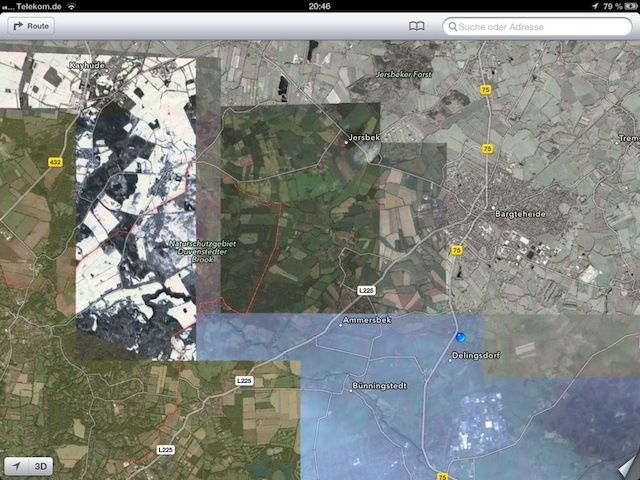 November 27, 2012: Apple fires the manager responsible for the disastrous Apple Maps app in iOS 6 after the glitchy software delivers embarrassingly bad data to users around the world.
November 27, 2012: Apple fires the manager responsible for the disastrous Apple Maps app in iOS 6 after the glitchy software delivers embarrassingly bad data to users around the world.
Richard Williamson, who oversaw Apple’s mapping team, gets the ax from Eddy Cue, who assumes leadership of the project.
Apple Maps launch: A historic misstep
The Apple Maps launch will go down as one of the biggest missteps in Apple history. The mapping service proved subpar on many levels. Even worse, the debacle came in the wake of Steve Jobs’ death, when people were looking for any excuse to accuse the company of suffering a decline in quality.
Unfortunately, the flawed Apple Maps gave those folks plenty of ammunition. In addition to warping landscapes and distorting landmarks, the Maps app even suggested that people steer the wrong way across a taxiway at Alaska’s Fairbanks International Airport.
Williamson wasn’t the only high-profile exec to go down as a result of the Apple Maps screwup, either. Apple also ousted Scott Forstall, senior vice president of iOS software, after he refused to make a public apology. (Cupertino announced Williamson’s firing weeks after Forstall’s.)
To fix the Apple Maps problem, Apple CEO Tim Cook recommended that customers temporarily use other mapping services. Meanwhile, Cue requested that digital maps provider TomTom NV help fix the landmark and navigation data for Apple.
“Look, the first thing is that you’re embarrassed,” Cue told Fast Company a few years later, regarding his response to Maps. “Let’s just deal with that one fact of emotion. These things mean a lot to us, we work really hard, and so you’re embarrassed. We had completely underestimated the product, the complexity of it.”
Apple Maps since then …
After Apple Maps’ disastrous launch in 2012, Cupertino made big steps to improve the service. The company started updating Apple Maps every day, introduced features like Flyover, and published a number of fascinating patents. (One example: An effort to make navigation software more humanlike by referencing landmarks and street signs instead of just road names.)
Apple also snapped up mapping-related companies like Coherent Navigation, which helped develop a form of ultra-detailed GPS that’s accurate within centimeters as opposed to the usual meters. Apple even applied for permission to use drones to improve its mapping.
The company reportedly spent “billions” updating its Maps app. And Cupertino continues to roll out enhanced versions of Apple Maps. iOS 15 introduced 3D views of major cities around the world. iOS 16 added the capability of planning routes with multiple stops. And iOS 17 brought even more big changes, like the ability to download Apple Maps for offline use.
As Cupertino continues to layer on features (like cycling directions and showing charging stations for electrical vehicles), Apple Maps has grown into a serious competitor for Google Maps and other competitors. In fact, these days, many people love Apple Maps! (Here’s our guide to eight secret features in Apple Maps that will help you love it, too.)
Still, to this day, some people still invoke the early Apple Maps nightmare as an example of tech gone wrong. However, it’s hard to fault Apple for correcting the problem as it did. Even if we never like to see anyone lose a job.


